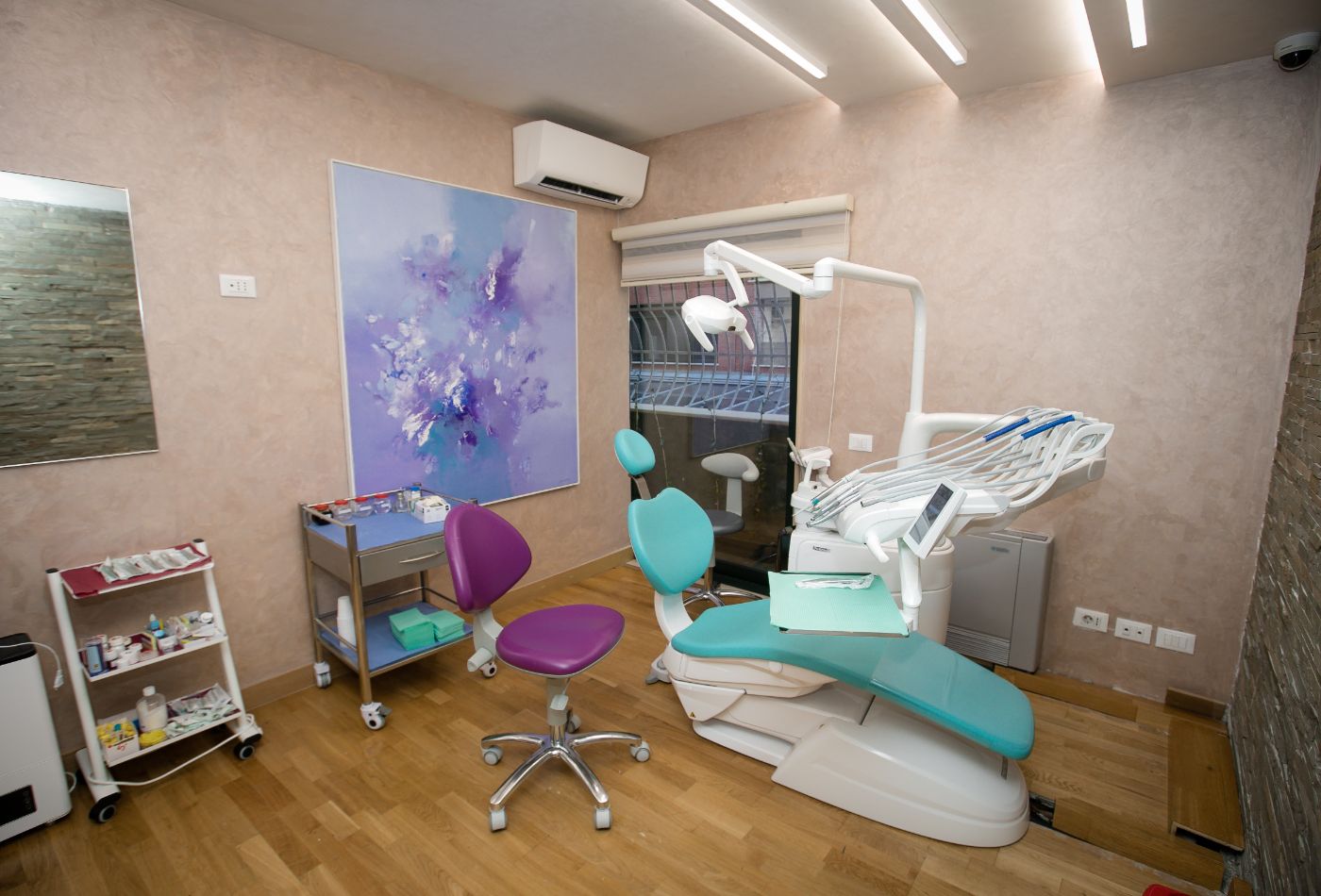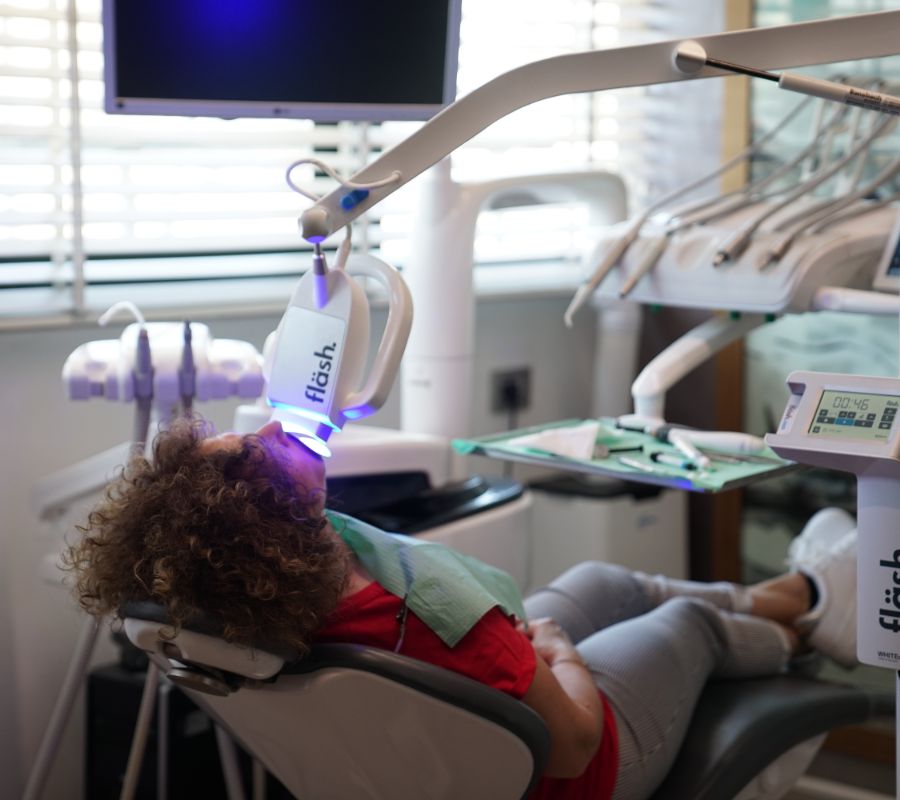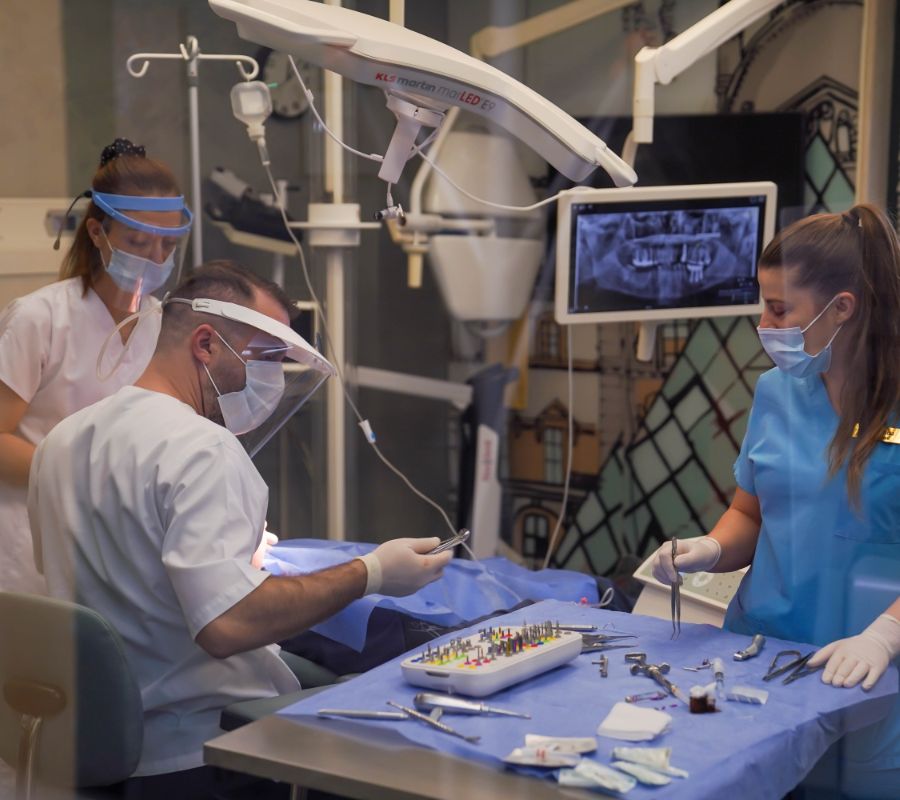anesthetic technique
Conscious sedation.
Conscious sedation is an anesthetic technique used to induce a state of relaxation, amnesia, and pain control during a diagnostic or surgical procedure using intravenous sedatives.
Perception of touch, tingling sensation in the head, feeling of empty head, and “lightening” are all normal reactions to sedation: there may also be a feeling of drowsiness, but not complete loss of consciousness as sedation is not general anesthesia.
Conscious sedation is a controlled, safe, and effective practice that allows the patient to overcome the stress of the teeth and allows the dentist to work calmly on a cooperative and perfect patient.
Conscious sedation does not involve the loss of protective reflexes, which is the ability to independently maintain the airway system and respond appropriately to physical stimuli and verbal commands.



Who does it serve?
It is beneficial for all patients, whose stress or fear prevents them from completing the dental procedure.
It serves the adult patient who finds the ultimate and pleasant solution to his anxieties.
It serves the phobic patient who would otherwise be treated with difficulty.
However, there are contraindications to conscious sedation that are noted during the examination and collection of anamnesis during the initial interview of the patient with the dentist and then with the anesthetist.
When is it used?
The choice is left to the patient and is always applicable if the anamnesis is acceptable. It is advisable in the most invasive surgeries, as well as in the simplest surgeries that cause concern to the patient, such as stone cleaning, measurement taking, or root removal, and in all surgical procedures of implantology, periodontology, extraction of teeth, fillings or devitalization of teeth.
Possible Complications
How is this procedure performed?.
Conscious sedation can be performed by many techniques, one of which is the absorption of a fixed and non-toxic percentage of nitrous oxide and oxygen through the nasal mask.
Nitric oxide is a known gas, tested and used since 1800. No allergies to this gas are known, it is not metabolized by the body and eliminated by respiration. The effects of conscious sedation are immediate and reversible within minutes.
- 1Respiratory complications and bronchospasm
- 2Cardiovascular complications
- 3Nausea and vomiting
Do you have any contraindications?
- Intestinal obstruction
- Skull and facial trauma
- Bullous emphysema
- Middle ear blockage
- Lack of vitamin B12
- Bronchitis COPD, emphysema
- Previous ophthalmic interventions
- Claustrophobia
- Maxillofacial deformity and / or nasal obstruction
- Pregnancy
- Treatment with bleomycin sulfate

